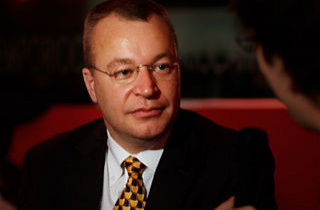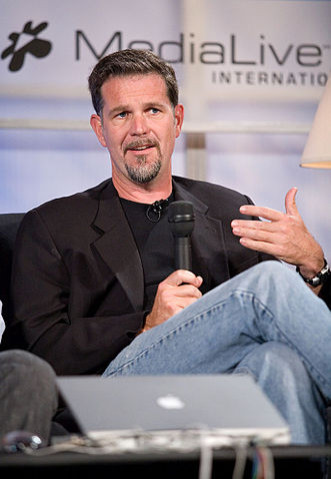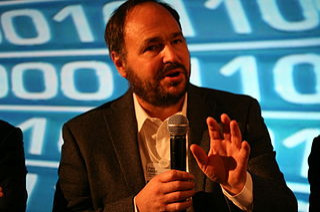Steve Ballmer Successor Search: 20 Front Runners, Contenders, Hopefuls And Long Shots For Microsoft CEO

Microsoft Corp. (NASDAQ:MSFT) announced last week that Steve Ballmer would retire after serving as CEO since 2000. Microsoft made no indication of who would fill his shoes, leading to widespread speculation in the tech community.
In a press release announcing Ballmer’s departure, Microsoft indicated that it wanted a person to guide the software company’s transformation to a devices and services company with a greater focus on engineering. Ballmer also said in a farewell letter that Microsoft needs “a CEO who will be here longer term for this new direction.”
Microsoft hires from within, as experiments with bringing in outside help have failed in the past. With more than 90,000 employees in nearly every area of technology, a Microsoft CEO needs to have diverse experience as well as a deep knowledge of the company. However, an outside perspective may be what Microsoft needs to get back on track.
With this in mind, here are some of the people believed to be considered as Ballmer’s replacement, beginning with the most likely candidates.
The Front-Runners
1. Tony Bates

Bates joined Microsoft as the CEO of Skype when Microsoft purchased the video chat service for $8.5 billion. Bates previous worked as the general manager of Cisco’s Enterprise, Commercial and Small Business Development group. Bates made Skype successful, and has apparently done well as Microsoft as well.
Bates currently works as the executive vice president of business development at Microsoft, dealing with corporate strategy, customers and developer support. Some have speculated that Microsoft created this position during the recent Microsoft corporate restructuring to test how Bates would perform at the top.
This experience, coupled with his experience in the cloud, an important focus of Microsoft’s corporate restructure, make Bates a prime candidate to take over Ballmer’s position. He is only 46 years old, which would fulfill Microsoft’s desire for someone who can serve as a long-term CEO, and would keep with Microsoft’s tradition of promoting internally.
2. Stephen Elop

Elop left Microsoft in 2010 as the head of Microsoft Office to join Nokia Corp. (NYSE: NOK), where has been successful as CEO in making a huge turnaround for the beleaguered mobile phone company. Nokia has been a close partner of Microsoft since 2011; all Nokia smartphones run Microsoft’s Windows Phone OS and Microsoft’s Bing search engine uses Nokia Maps.
Before his time with Nokia and Microsoft, Elop had successful leadership positions at Juniper Networks Inc. (NYSE: JNPR) and Adobe Systems Inc. (NASDAQ: ADBE).
Elop was instrumental in developing this partnership. There is speculation that acquiring Nokia is a part of Microsoft’s mobile plans. Some think this actually makes Elop a less likely candidate to take over Ballmer’s job, while others think it could help make the deal a reality. Elop also has less Microsoft experience than Bates, but that may provide the fresh blood that Microsoft is looking for.

Hastings is the CEO of Netflix Inc. (NASDAQ: NFLX), sits on the board of Facebook Inc. (NASDAQ: FB), and served on the Microsoft board until October 2012. When Hastings announced that he would not try to hold his spot after five years, Ballmer had high praise for Hastings.
"Reed has been a terrific board member, and his insights and experience have really helped guide us through a critical period of transformation for both Microsoft and the industry," Ballmer said at the time.
Hastings has a background in software and engineering, but also has the business and consumer experience that would make an ideal Microsoft CEO. He proved an entrepreneurial spirit with the founding of Netflix and also dedicates a lot of his time to education and charity.
Some felt that Hastings is too busy with Netflix to consider the job, and that his experience isn’t diverse enough for a company as large as Microsoft. Others thought his sudden departure from the Microsoft board was part of an effort to remove himself from boards to work with Microsoft in a larger capacity. This also fueled speculation that Microsoft was interested in buying Netflix.
Contenders

After the Microsoft reorganization, Nadella was named the executive vice president of Microsoft’s Cloud and Enterprise group, which is clearly a very important focus for Microsoft’s future. Nadella has a sterling reputation with Microsoft after a 21-year career with the company. Nadella has a strong background in engineering, but there are doubts about his ability to lead the company and impress investors.
5. Paul Maritz

Maritz worked at Microsoft for 14 years as an engineer before leaving in 2000 for a position as CEO at VMware Inc. (NYSE: VMW). He still lives in the Seattle area, where he is works with Pivotal, a spinoff from VMWare, and has many connections with local businesses. Like Nadella, Maritz would be more of a tech-minded CEO than Ballmer, which could be the change Microsoft is looking for.
Hopefuls
6. Qi Lu

Lu was recently named the executive vice president of Applications and Services after the reorganization. In this capacity, Lu is in charge of Office, SharePoint and Bing, to name a few. Previously, Lu served as president of the online services unit, overseeing Microsoft’s search, portal and online advertising efforts. He has a great reputation within Microsoft, and a focus on services may help Microsoft as PC sales and Windows continue to decline.

Larson-Green has worked with Microsoft for 20 years and is currently the executive vice president of Microsoft’s Devices and Studios group, where she is in charge of Xbox and Surface tablets. Both of those have suffered major missteps recently, but Larson-Green filled the void left by Steven Sinofsky when he suddenly left Microsoft. Larson-Green has a better understanding of these platforms than Ballmer, and is in a position to help Microsoft capitalize them in the future.

Before his sudden departure from Microsoft in November, Sinofsky was the only person within Microsoft that really stood out as Ballmer’s heir. Sinofsky worked at Microsoft for 20 years and was the president of Windows before he quit. He was responsible for the design of Windows 8, is very familiar with the inner workings of Microsoft, and could be a good option to lead the company. The reason for his departure was never disclosed, but some speculate that it was because the CEO title wasn’t heading his way. He also just accepted a position as a partner at Andreessen Horowitz, so he may not even be interested in coming back to Microsoft.
The Long Shots
9. Bill Veghte
10. Alan Mulally
11. Sheryl Sandberg
12. Eric Rudder
13. Kirill Tatarinov
14. Kevin Turner
15. Tami Reller
16. Scott Forstall
17. Mark Hurd
18. Kevin Johnson
19. Bob Muglia
20. Vic Gundotra
Who do you think will replace Ballmer as the Microsoft CEO? Let us know in the comments section.
© Copyright IBTimes 2024. All rights reserved.






















